Inside: Information and discussion ideas for Parson Weems Fable by Grant Wood. This is an excellent choice of artwork to discuss the elements and principles of art–especially emphasis, shape, line, and color!
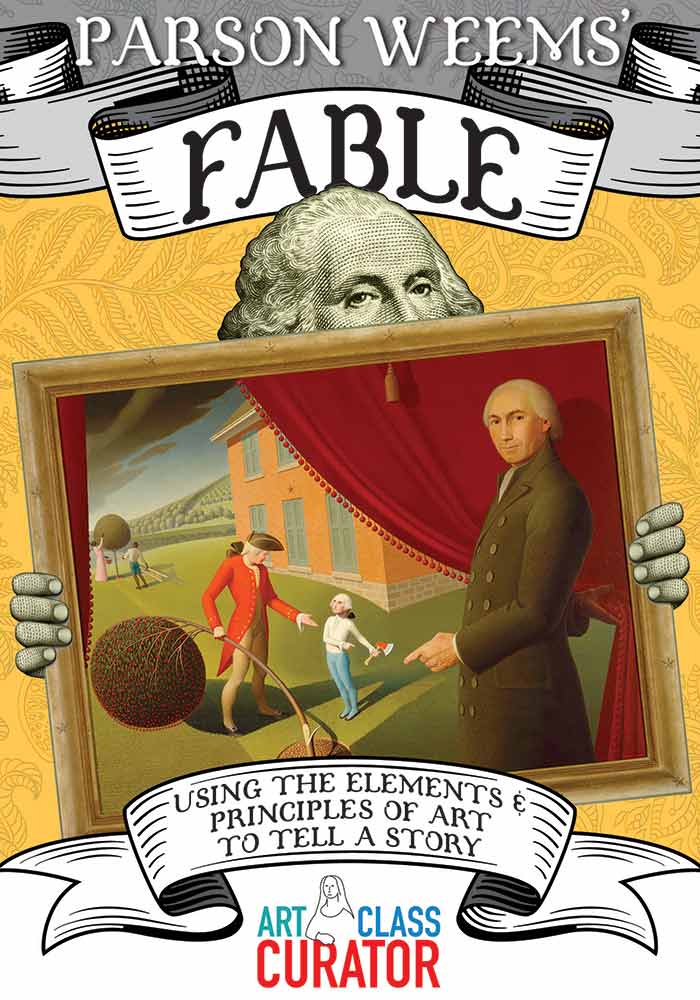
Grant Wood is best known for American Gothic, but he also created one of my favorite artworks to discuss with students. Parson Weems’ Fable is a special treat for elementary aged students, but older kids enjoy analyzing it as well. It’s both fun and instructional to interpret because of the pronounced uses of the elements and principles of art. It’s easy for students to see how the artist’s choices emphasize certain parts of the painting.
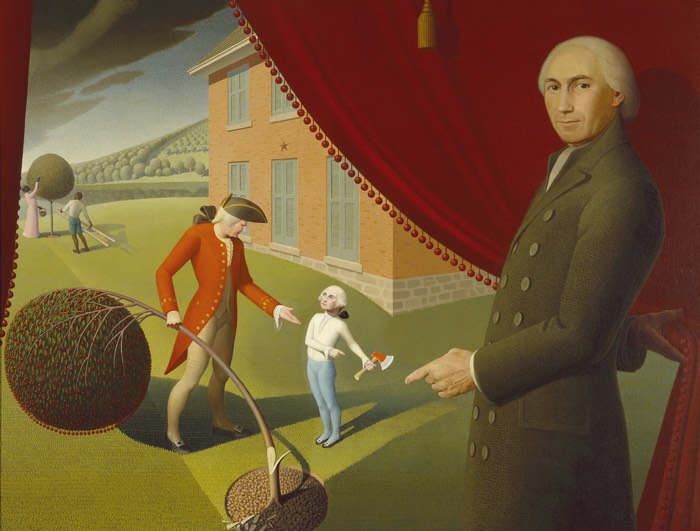
The Elements and Principles of Art in Parson Weems Fable
Emphasis
One of the first things most people notice about this painting is the absurd adult head atop a child’s body. The wispy white wave of his hair and the iconic profile instantly mark him as George Washington. Within a few minutes, anyone who has heard the story of Washington and the cherry tree will recognize what is being depicted, but how do the artist’s choices direct us to this narrative?
Line
Nearly all of the lines in the painting are pointed towards Washington and his ax: the hand and fingers of the trio in the foreground, the edge of the house, the ladder, and the sliver of tree bark. This immediately draws our attention to that spot.
Shape
The repetition of circles and curves guides our eyes around the painting, a detail which students usually notice on their own if given time. There’s the curve of the curtain, the trees, the cherries, the circle of mulch around the bottom of the tree, as well as the many buttons.
Light
Light adds depth to the painting, from the dark clouds above the heads of the slaves to the spotlight and resulting shadows around George Washington. The bright white and blue of Washington’s clothes stand out in contrast to the more muted colors of the rest of the painting, adding further emphasis to the center point of the artwork.
Color
Wood used primarily red and green shades in this painting. These two complementary colors bring the picture together, showcasing another design element – unity.
Space, Perspective, and Scale
By placing the narrator in the foreground in front of a theatre curtain, Grant Wood tells us that the story is not true. The narrator, Parson Weems, stands in front telling the story.
Drawing Meaning from Parson Weems Fable
I was surprised by how many students had never heard the story of George Washington and the cherry tree. Meanwhile, many adults still believe the story to be true. Here’s what Grant Wood, who died in 1942, had to say about his painting:
When I was a boy, we all learned the story of George Washington and the cherry tree and accepted it as gospel truth. The present, more enlightened younger generation, however, is well aware that this incident never happened, but that it was the invention of Washington’s most famous biographer, the Rev. Mason Locke Weems.
The conviction that a valuable and colorful part of our national heritage is being lost as a result of the work of analytical historians and debunking biographers prompted me to paint my version of George Washington and the cherry tree. I sincerely hope that this painting will reawaken interest in the cherry tree and other bits of American folklore that are too good to lose.
Since it’s impossible to know who in your classroom has heard the story and who believes it to be true, I refrain from sharing the title until students have had a chance to discuss it. This allows the conversation to develop in interesting ways.
It’s fun to dissect how the choices Grant Wood made with the elements of art and principles of design lead to the development of meaning. The space and perspective of the narrator and curtain and the use of the elements of art to show emphasis tell us what we need to know about Weems’ role in the creation of the story.
Discussion Questions
- What’s going on in this painting? How can you tell?
- Who are these people?
- Who is the guy in front? What is his role in the painting?
- What is strange about this painting?
- Why do you think the artist used the older version of George Washington’s head instead of a child’s head?
- What shape is repeated throughout the painting? Why do you think the artist
repeated that shape? - How does the artist use line and color to draw attention to George Washington?
- Which area of the painting is emphasized by the artist?
- What choices does the artist make to create emphasis?
The conversations that erupt from this artwork are always fun to listen to. Many students conclude that the man holding the curtain is someone related to Washington. Some think he is a version of George Washington presenting the scene from the future. Wherever your students’ minds fly, you’ll have fun exploring history, myth, and the elements and principles of art.
Download the Free Elements and Principles Printable Pack
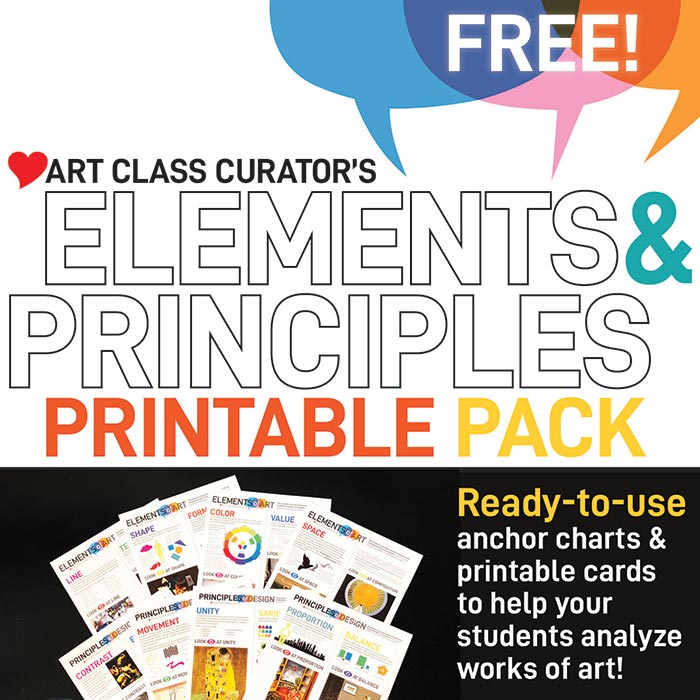
This pack of printables was designed to work in a variety of ways in your classroom when teaching the elements and principles of art. You can print and hang in your classroom as posters/anchor charts or you can cut each element and principle of art in its own individual card to use as a lesson manipulative.

Free Resource!
Elements & Principles Printable Pack
The Elements & Principles of Art are the foundation of every artwork, but teaching them can be a bore. Wake your students up and engage them with full color artworks, easy to understand definitions, and thought-provoking higher level thinking questions. This versatile resource can be hung in the classroom or used as an art manipulative.
Last year, I did a video on Parson Weems Fable. Check it out:

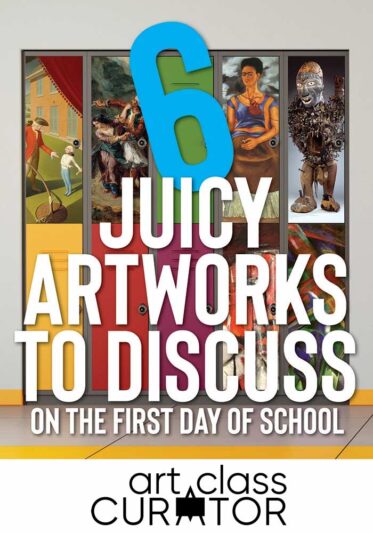
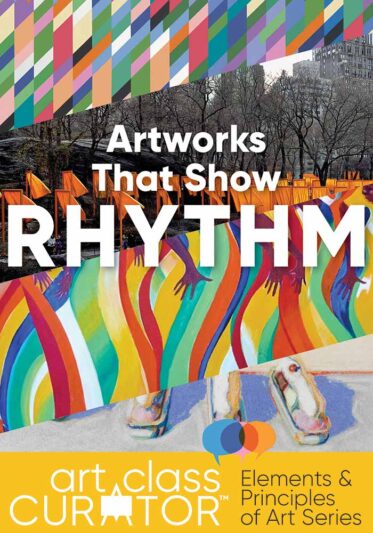
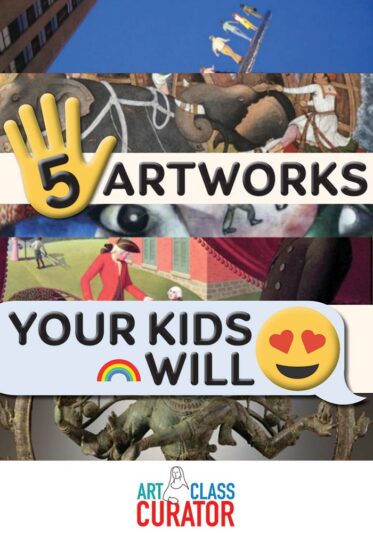

Fantastic! Thank you for non-scarey, simple idea for young artists!
This is such a fantastic lesson. I am going to use it during my first week. Never have I been so excited to teach art history as I am after reading your engaging lesson plans. I really love the activity ideas and the depth of connections you make. Thank you!! If you ever write a book I will buy it.
<3<3<3 Thanks so much Kristin :)
I have the book in the back of my mind!
It’s a shame that you completely ignore the opportunity to acknowledge the enslaved individuals in the background. Integrating this topic would be a wonderful segue to incorporating American history into a conversation with students. By totally ignoring the scene in the background of the painting, you perpetuate the whitewashing of our US story.
I usually discuss how the dark clouds in the background are a foreshadowing to slavery. I probably talked about it in the video on this page, but forgot to mention it in the post. Thanks for your comment.